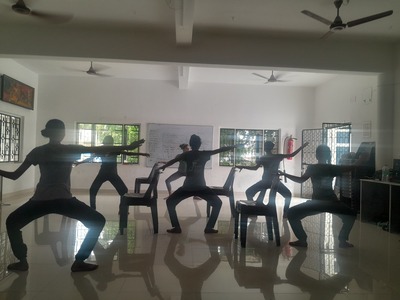
This piece let us explain the majestic Ballet of La Bayadère as part of a broader storytelling tradition. It is an interpretation that sees the art forms our practice of Classical Dance is centred on, as universal and connected.
We owe the rare but striking meeting point of both our dominant art forms of Classical Ballet and Indian Classical Dance to the tradition of Temple Dancing. Temples were the first sanctuaries of Indian Classical Dance forms. Temple Dancing, which involved female dancers who had dedicated their lives to Dance, dancing for deities in temples (and devotees as a result), was made globally renowned through La Bayadère – an exquisite Classical Ballet production created in the 19th Century and danced to this day.
Although the setting of the production is a mere view of ancient Royal India, laying no claim to being a representation of Indian culture, this Ballet has beautifully popularized the phenomenon of a ‘Temple Dancer in India’ to the wider world, given the reach and draw of Ballet all those years ago.
‘Bayadères’ or ‘Temple Dancers’ or ‘Devadasis’ – the Dancers of the Gods – made offerings of their Art to the divine. This is where the entire concept of ‘Art as a form of worship’ originated and is sustained in the hearts of Dancers of all styles who surrender wholeheartedly to their Art. In an oblique way, every Dancer is a Temple Dancer so to speak. We dedicate our lives to the Art and let it lord over us like nothing else. And here, for this reason just as well, East meets West.

Nikiya, the titular character in La Bayadère, emerges as she is meant to – from her abode, a temple. With a pureness of heart, she falls in love with Solor, a nobleman who eventually leaves her heartbroken. He comes under duress by the King to marry his daughter Gamzatti and does not fight for his love, Nikiya. She dies Dancing, for (and perhaps to) her love. What follows this tragedy is despair, longing and a hope that they will be united in the heavens for an eternity.
Stories from India – whether ancient or mythological – are similar. They could even be the same. But exquisite cultural differences make them unique to a place and its people. A Dancer, full of love, life and craft, full of love for her life and craft, falls in love and wants what she wants. The pursuit of it becomes the purpose of her existence, like anything she has ever loved and gone after. We’ve heard this story across cultures before. We’ve heard it in the tale of Meera, yearning for Lord Krishna and ultimately, uniting with him in paradise after profound meditation upon her love and Lord. We’ve heard it in the tale of Goddess Parvati, undergoing supreme penance and practice of Dance and other disciplines to triumph over the heart of the Lord of Dance – Shiva.

Wherever these stories come from, they transport us into the mind and motivations of Girls and Women who give and give and then, give some more with the strength and valour of warriors, for love…always for love, with love. We don’t know where this bottomless reserve begins and ends but we do know that those who have the keys to it, open the doors to a whole world of understanding, empathy and exploration. And this is everything the Arts need – a depth and freedom to illustrate the best and truest in humanity and the world.
You could be a practitioner of Ballet or Bharata Natyam, whatever form, style or approach, but learning and telling stories from a real, imaginary, historic or contemporary world, with and through your Art deepen your appreciation of humanity and your belief in love. You are able to explain life, choices and circumstances better. You become less judgmental and more capable of compassion.
If one attempted to enter the mind of a ‘Bayadère’ all those centuries ago, we’d find that love, devotion, mysticism, strength, fluidity and belief pervaded their entire being. It was almost as though they had set the core profile of a Dancer in stone for all generations to come. This is the rulebook we follow – the discipline that also helps us retain our freedom. This is the quality of mind, body and spirit we aspire to and indeed grow to achieve, as Dancers of the highest order. So, while we move forward and do our best to progress, we’re actually moving back in time, to an era that laid down those very standards of excellence, execution and earnestness; of being a force of nature and will; of fully giving of oneself.
Of all the choices Temple Dancers make very early on in their lives, the bravest and most overarching may be the decision to love. And to, as a consequence, follow their hearts and their calling in whatever direction that love leads – inside the sanctum of a temple, in service, practice and performance of their Art – Dance. Compassion is a consequence of that decision. Sure enough, you have to come from a place of purity to live and give Art inside and around a temple. And that may be why Bayadères were the best Dancers of them all. Their Art was love. It was worship. In every era, in every part and direction of the world, these will always be one and the same thing.
Our lessons from Dance are the same, East or West. Irrespective of the outcome. Whenever heaven on earth arrives…that transcendental moment a Dancer loves, lives and dies for…




Comments